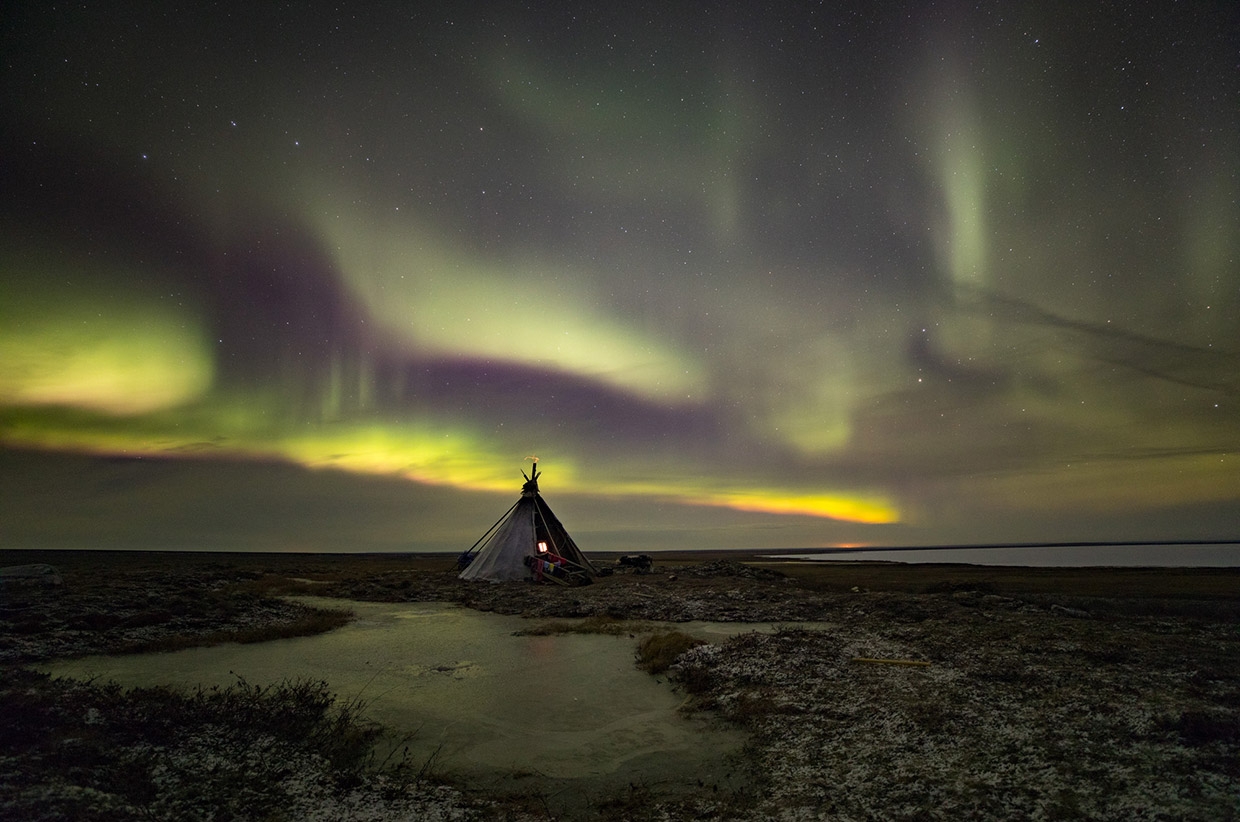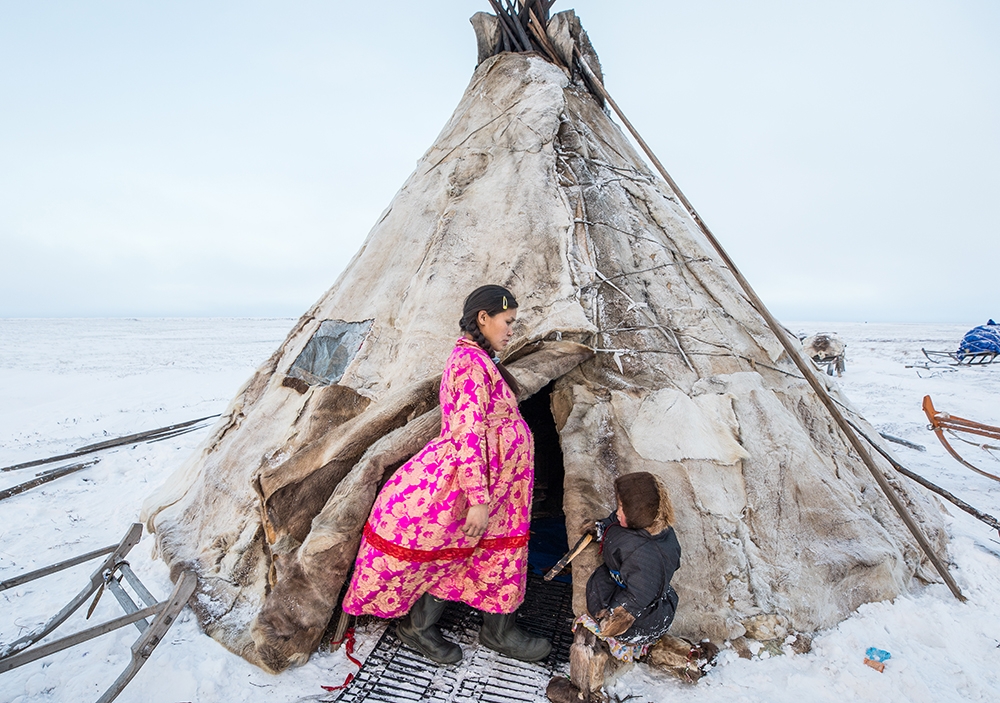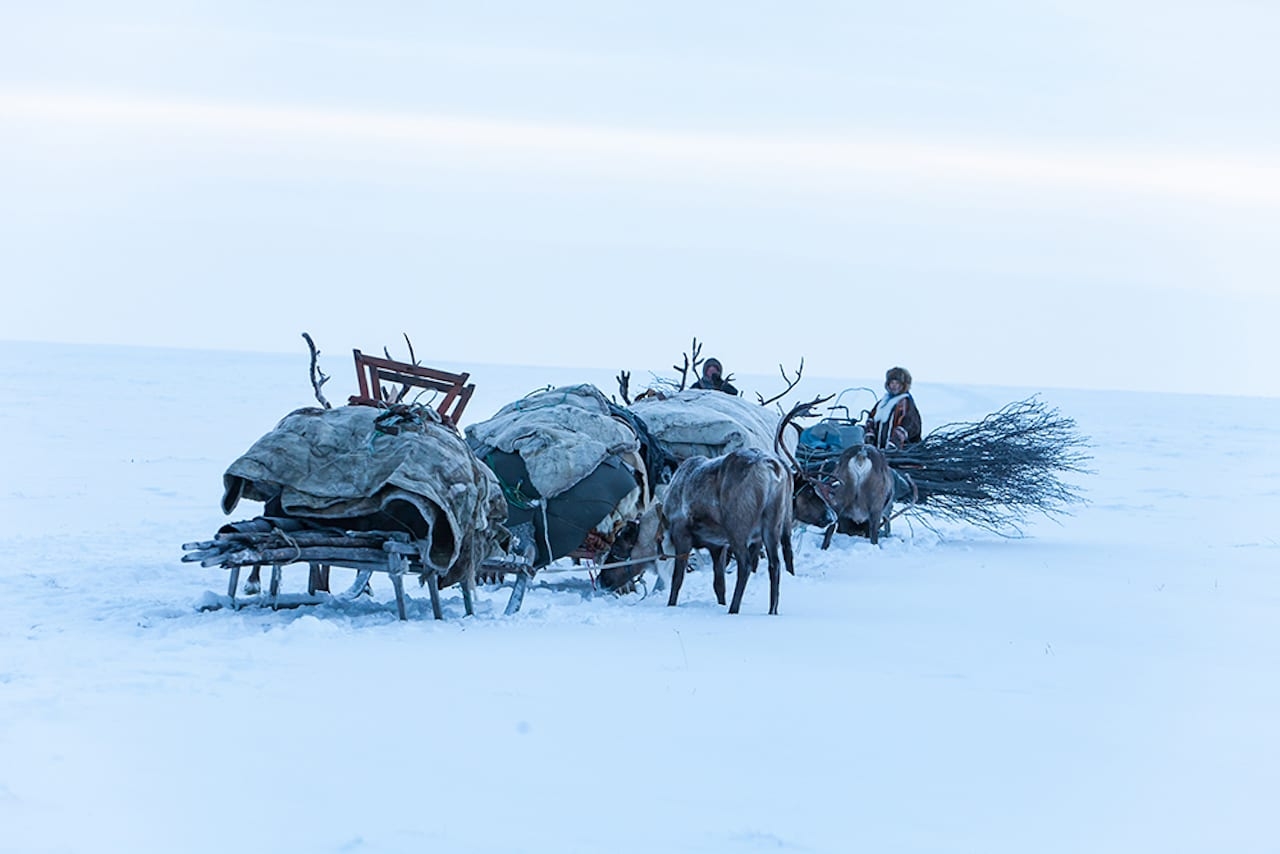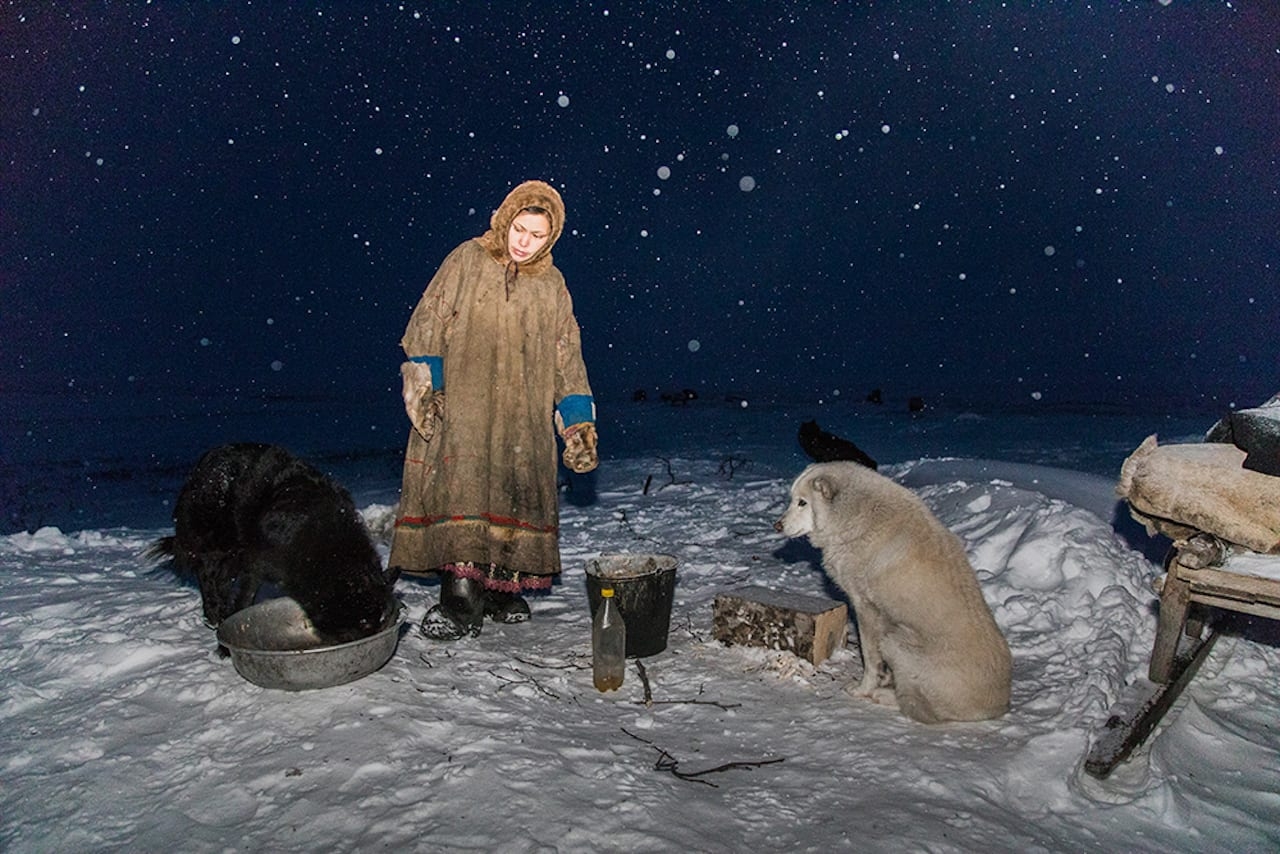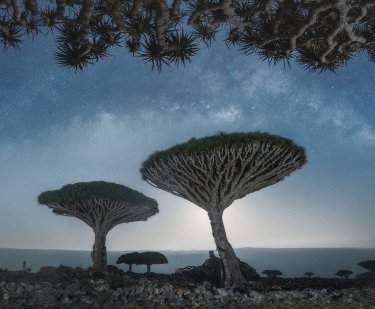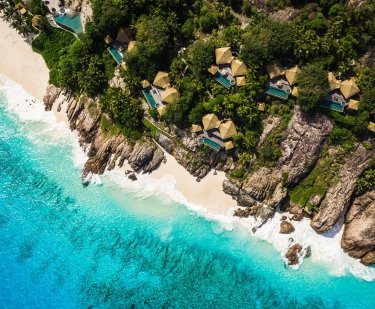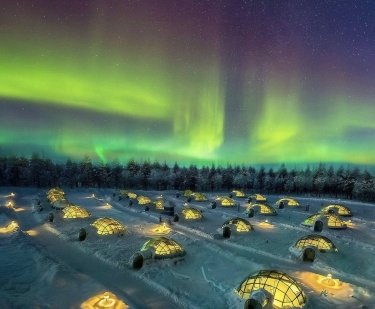For centuries, the Nenets have traveled across the Siberian arctic in one of the most challenging feats humanly possible. The Nenets are nomadic reindeer herders. In fact, they are the last tribe of their kind that herds reindeer in this way. The reindeer play a critical role in the Nenets culture.
In fact, they rely heavily on their reindeer for everything from tools and clothing, to food and transportation. They take these herds of reindeer with them along the same ancient migration routes they always have. Each Nenet not only has a responsibility to help care for the herd along their journey, but they are each given a sacred reindeer, which is not harnessed or slaughtered until it is unable to walk. It is one of the many traditions that the tribe maintains along their journey.

